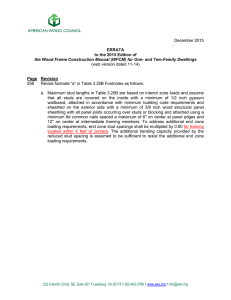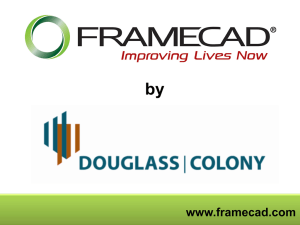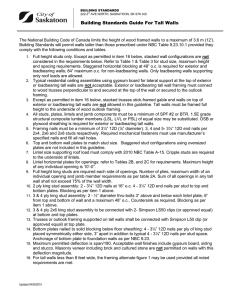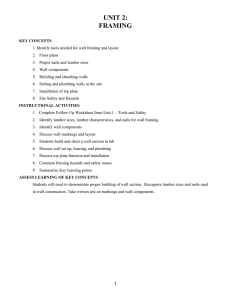Framing Partition Walls There are two types of wall framing in
advertisement
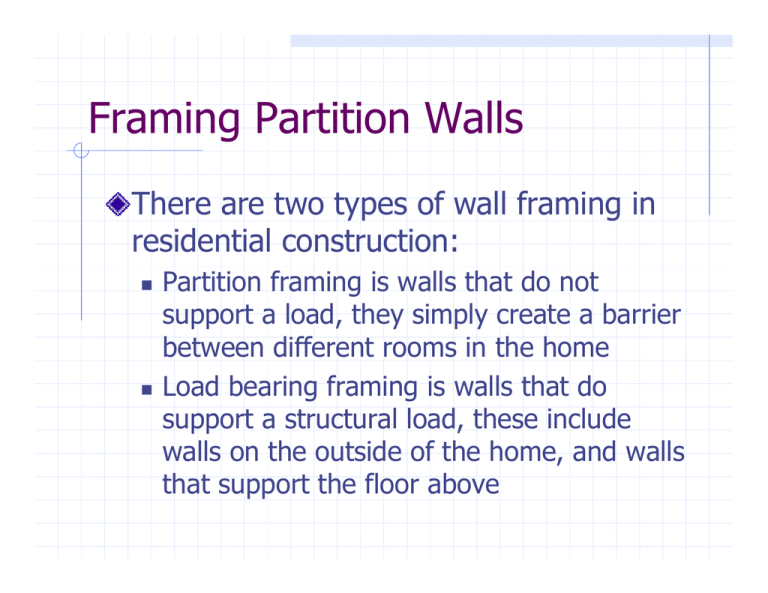
Framing Partition Walls There are two types of wall framing in residential construction: Partition framing is walls that do not support a load, they simply create a barrier between different rooms in the home Load bearing framing is walls that do support a structural load, these include walls on the outside of the home, and walls that support the floor above Framing Terminology Sole Plate: Member that sits on the floor at the bottom of a wall Top Plate: Member that is at the top of the wall (can also be a Double Top Plate when there are two members stacked on top of each other) Stud: Vertical member that runs between the Top and Sole Plates Framing Terminology (cnt'd) Header: Member that spans the top of a door or window opening Sill: Member that is at the bottom of a window opening Cripple Stud: Member that supports the sill, it runs from the Sole Plate to the Sill, Cripples are also used in the opening above the door or window framing Framing Terminology (cnt'd) Nailer Stud: A Stud that is placed at either side of the intersection of two walls. Nailer Studs provide a surface for Drywall to be screwed or nailed into. Framing Plan: A drawing that shows the location of all Framing Members, including Studs, Headers, Sills, Cripples, Sole and Top Plates Framing Terminology (cnt'd) Stud Spacing: The distance on center from one stud to the next Stud spacing for Partition Walls can be 16”o.c. or 24”o.c. Partition Framing Stud Centers pg 211 fig 12-3 Nailer Stud Example pg 213 fig 12-9
